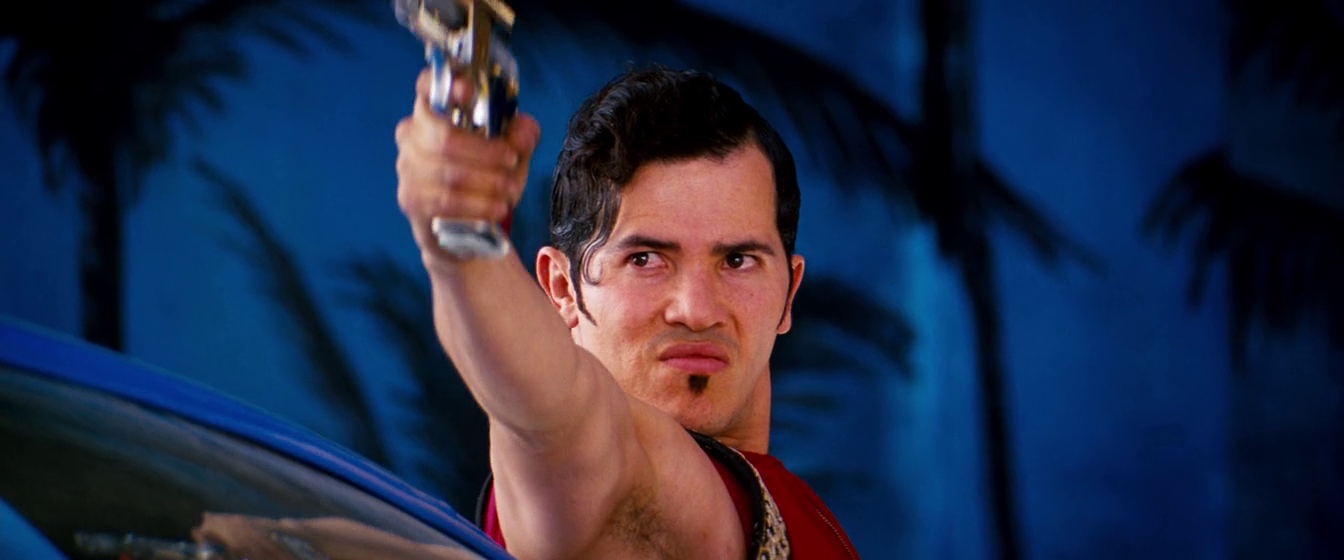Please outline some points that you took away from the Lighting Lecture. Points that excite you, something that was completely new to you, perplexes you or even one you take issue with.
Unfortunately I could not attend the lighting lecture – I was helping shoot a friend’s VCA 2nd-year film that I production designed. It involved a foam suit, newspaper-plastered windows, dead bugs and much, much more.
I really wish the lighting lecture hadn’t been that week, because lighting is something I really am (excuse me for this pun) in-the-dark about. I don’t know that much about lighting. And I really want to learn about lighting. I think it’s so important, and so interesting.
But reading other people’s blog posts and asking my friends about the lecture will have to suffice.
Apparently three-point lighting was discussed. I kind of know about this – the key light, fill light, and back light. The key light is the main light illuminating the subject. The fill light is softer/less intense light that floods the space/subject and reduces shadows created by the key light. (I suppose this is largely what reflectors are used for too?) The back light helps create an even more three-dimensional image by distinguishing the subject from the background.
I find it quite fascinating how constructed it all is. How a shot is somewhat split into three in terms of lighting. And then this is changed for each new shot and setup. Such artificial means of achieving a (sometimes) natural-looking effect. Everything on the screen is glorified by lighting.
I don’t know much about lighting. I’d like to have a go setting up three-point lighting for a few different shots. I think that’d be a good exercise. I’m really interested in cinematography (but again, zero experience, only just bought a Canon 60D but have not bought SD cards yet) so I need to develop a deep understanding of lighting.
I had a go at figuring out the placement/direction of the key, fill, and back light for a shot. I’m not sure if it’s right though. (The thickest arrow = key light, second thickest = fill light, thinnest = back light.)

Apparently the lecture discussed hard and soft lighting.
I’ve always had trouble relating hard and soft lighting to low-key and high-key lighting. And with high- and low-key lighting in general.
What I do know is that soft lighting has a more diffused look, reduces shadows, softens textures/edges of subject.

Hard lighting accentuates texture/edges on subject, casts sharp, strong shadows, and gives stronger highlights on subjects/spaces.
Now to look up what I don’t know!
Wikipedia tells me that the main factors are distance of light source and size of light source. The “closer” and “larger” the light source, the softer it becomes. I wouldn’t have thought that a closer light would mean softer lighting. I guess this depends on the positioning of every other light. If we’re talking about three-point lighting, a closer key light would probably (I’m guessing) cast stronger/sharper shadows. Unless the fill and back light are also moved closer? I don’t know.
Now. High- and low-key lighting. (I’ve never actually thought about this, but this is specifically referring to the intensity of the key light. Huh. Can’t believe I overlooked that part of the name.)
But my issue still remains. Are high-key and low-key lighting just other ways of saying soft and hard lighting?
High-key lighting: Bright. Soft. Less shadow. Low contrast. I imagine this sort of lighting to have more fill light. It seems more appropriate to call it high-fill lighting, in my eyes.

Low-key lighting: Sharp, strong shadows. Highlights. High contrast. Chiaroscuro lighting (I love chiaroscuro lighting). I’m imagining this lighting as having less / removing the fill light. But then why would it be called low-key lighting? Wouldn’t it be called low-fill lighting? Because I imagine that lighting with strong highlights and shadows could also be achieved using ‘high’/strong key light. As long as the fill light is reduced. This is just me imagining the situation. I may be completely wrong.
I feel like:
- High-key lighting = soft lighting (often for naturalistic effect)
- Low-key lighting = hard lighting (often for expressionistic effect – convey deeper mood)
But then, it still doesn’t make much sense to me. Does low-key lighting = hard lighting? Because one hard lighting shot might be the subject overexposed to key light. Harsh highlights. Then wouldn’t that be high-key lighting?
I’m not sure whether it was discussed in the lecture, but I’m also really keen to learn about colour temperature, play with gels and diff, and learn about the distinctions between different types of lights (red-heads, blondies, kinos, dedos, etc.).
Red, blue, and yellow/orange gels in action (gels make everything look awesome):




